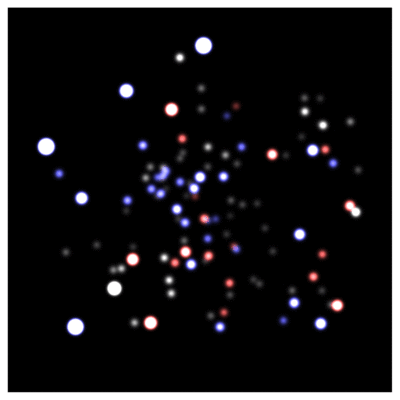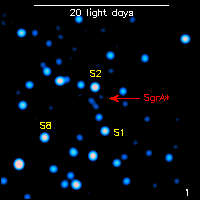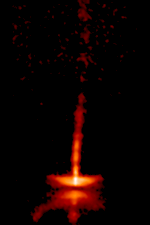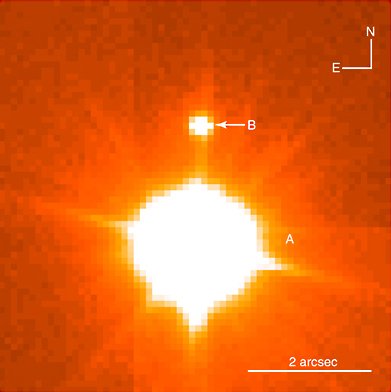
Science
The combination of four 8-m-class Telescopes using the GRAVITY interferometric beam combiner together with a robust and innovative near-infrared adaptive optics system, opens exciting observing conditions in the following astro-physical fields.
High Precision Astrometry of Objects around the Galactic Center
The interferometric combination of four telescope beam allows an angular resolution for astrometry of about 10 micro-arcseconds.
Animations from MPE GC-Research Homepage.

© Max Planck Institute for Extraterrestrial Physics
|

© Max Planck Institute for Extraterrestrial Physics
|
Disks and Jets of Young Stellar Objects

GRAVITY will be able to image faint, dust-embedded objects, thanks to its operating wavelength band in the Near Infrared.
HH 30, Image from hubblesite.org
Artist's impression of the whirlpool around a gigantic black hole
Detailed observations of the quasar 3C 273 with the GRAVITY instrument have revealled the structure of rapidly moving gas around the central super-massive black hole. Studying these black holes and determining their masses is an essential ingredient to understanding galaxy evolution in general.
This video shows a zoom from an optical image of the quasar to an artist’s impression of the surroundings of a supermassive black hole, composed of a dusty torus, very hot, infalling material and often a jet of material ejected at high speeds from the black hole’s poles. Astronomers are now able to spatially resolve the “broad line region”, where gas clouds whirl around the central black hole.
Planets and brown dwarfs in binary systems

GRAVITY's Adaptive Optics assisted imaging allows detailed views of small objects like extrasolar planets in multiple systems.











